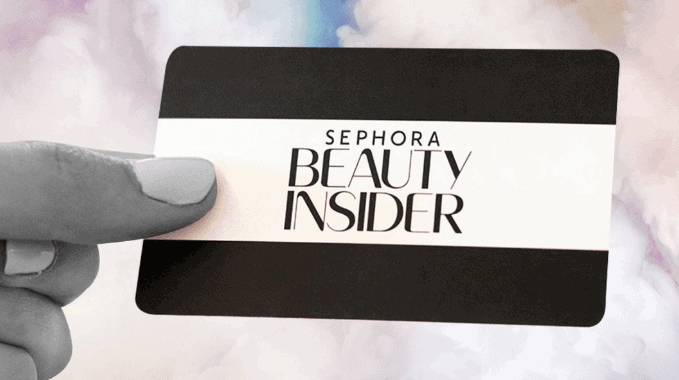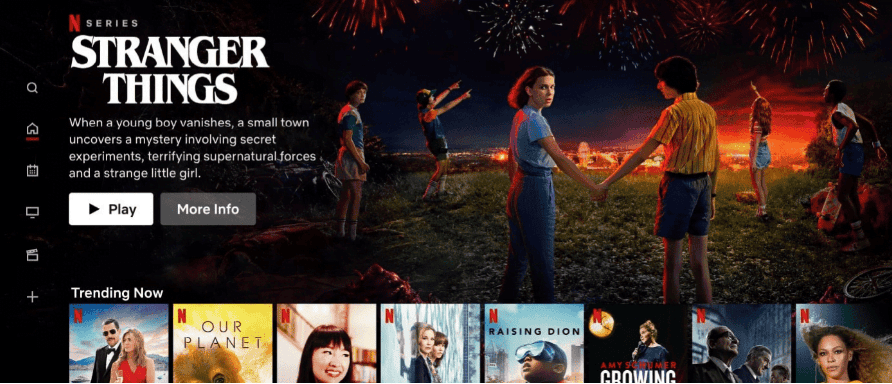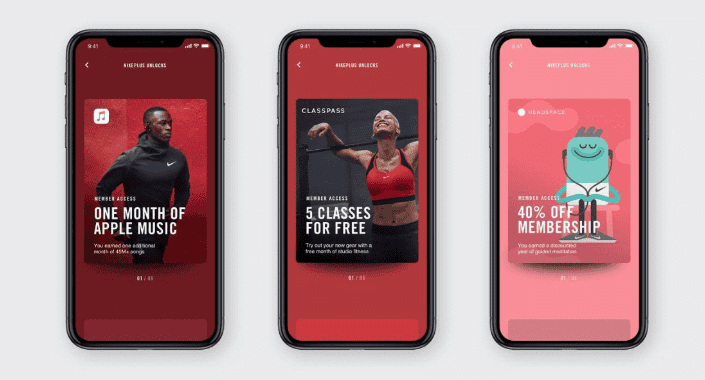Customer engagement is a hot topic in the business world right now. Customer engagement marketing, after all, considers all stages and types of customer experiences and can help you form long-term relationships with your clients.
Whether you’re a B2B or B2C organization, you want to develop and maintain great interactions and connections with your clients. Customer engagement marketing is a great strategy to do so.
[playht_player width=”100%” height=”175″ voice=”Mark”]
However, despite its growing popularity, most people still think of customer engagement as a vague concept. Maybe you’re already in the middle of a customer engagement campaign, or you are just learning the know-how of customer engagement marketing.
In either case, this comprehensive guide to customer engagement strategy will provide you with everything you need to get started or strengthen your current market position.
Here, we’ll look at what customer engagement entails, its examples, benefits, and strategies for building a stronger relationship with your customers.
What is Customer Engagement Marketing?
Customer engagement marketing is a type of marketing that utilizes personalized communications to help a company’s ideal prospects go through the sales funnel. You draw them into the funnel, nurture them, and eventually convert them into loyal brand evangelists who spread the word about your company.
Rather than flashing advertisements in front of people, customer engagement marketing creates meaningful relationships with customers through relevant and personalized information. Marketers use data to understand who the customers are, what they do, and what their purchase history is, to engage them in more personal and meaningful ways, with the added benefit of driving them up the sales funnel more rapidly.
Engagement marketing is a multi-channel strategy that combines content marketing, email marketing, marketing automation, and social media marketing to produce a high-engagement inbound marketing campaign. A great engagement marketing campaign can be far more cost-effective than traditional advertising in terms of expanding brand awareness.
Thus, we can define customer engagement marketing as a strategy that is used to keep customers interested in your company by implementing a combination of cross-channel approaches, such as personalization and relationship building.
Consider this scenario:
You open your email to see a personalized greeting from Lily, a manager at an online apparel store from which you have purchased products earlier.
Lily is sending you a message to inform you that the company is launching a new line of summer dresses. She thinks these could be of interest to you because you purchased similar products last summer. She ends the email by thanking you for purchasing multiple dresses and a pair of heels in the past.
Lily sees this as an excellent opportunity to contact and persuade you to purchase. She’s using customer engagement marketing by giving you an offer that might be relevant to your interests based on your previous purchasing habits.
Importance of Customer Engagement Marketing
Every company’s long-term goal is to increase sales. But customer engagement also has a slew of other advantages that will position your company for long-term success and boost your ROI. These can include the following:
1. Increased consumer trust and loyalty
Customer engagement may aid in the establishment of trust between both the customer and the brand. You may effectively optimize the value your customers receive from your brand by being connected with them and producing engaging content via verified Instagram account or other media, which can lead to loyalty.
2. Increased Customer Retention
Customers who are happy with your service will continue to do business with you. When was the last time you switched your primary email vendor? Despite the fact that people grumble about things changing on Facebook, they’re hooked and won’t leave it. That’s because they have the qualities you desire, and you always get value from them.
3. Reveal Up-Sell Possibilities
You can simply market and sell goods with additional features if you have a devoted consumer base. In general, selling to an existing customer is easier than selling to a new lead.
Upselling might help you earn a profit faster by saving time and money. You may swiftly review product performance and uncover up-sell chances by looking at consumer trends and data, such as proposing items that are usually brought together.
4. Increased Brand Advocacy/Referrals
They’ll talk about what you do if they like it. They’ll spread the word about your service. Nothing beats peer recommendation or word-of-mouth marketing for impact and credibility. Engaged customers already appreciate what you do, and they will help spread the word for free.
5. Reduced buying cycles and increased number of customers
Interacting with new clients early will help you shorten the sales cycle as compared to letting them learn about your products on their own. Furthermore, having the correct and effective engagement strategies enables firms to have a big impact on customers’ purchasing decisions. As a result, the company’s sales team will also be relieved of some of their responsibilities and be more productive.
6. Improved Customer Relationships
With the effective alignment of content and social media marketing, communication with clients across platforms on a regular basis aids in the development of rapport. Customer engagement does not end when a customer makes a purchase; customers frequently have inquiries throughout the process.
From initial discovery to purchase and beyond, effective engagement tactics make it possible to connect with and understand the needs of your customers.
Examples of Customer Engagement Marketing
Personalization isn’t just great to have; it’s necessary for a successful digital marketing campaign. Furthermore, surface-level personalizations such as the user’s first name will no longer suffice. According to Forbes, today, 64% of consumers demand bespoke customer experiences based on previous encounters.
Users nowadays expect dynamic content that is tailored to their specific requirements. Here are a few examples of how global brands are using content personalization to increase consumer engagement.
Sephora

Sephora’s Beauty Insider Rewards scheme is designed to foster lasting bonds between customers and the company. Sephora Beauty Insiders can use the Beauty Bag on their computer or smartphone to combine their online shopping, in-store visits, and social media posts in one place.
Consumers can shop while also viewing their favorite list, previous purchases, and the number of rewards points they have accrued. They can scan things in-store to see what more is available online, view tutorial videos, and locate a nearby store.
This highly successful omnichannel marketing strategy has cultivated 11 million members who spend 15 times more on Sephora’s products.
Coca-Cola
As you may recall, Coca-Cola introduced a new promotional campaign in 2014 that swept the nation. On 20-ounce bottles, #ShareACoke replaced the company’s logo with 250 of the most popular names in the United States.
It was even more engaging because of the personalized aspect. On a Coke bottle, customers might see a part of themselves. Even people with uncommon names could participate in the “Share A Coke” tour, which allowed them to customize their own cans. It was an uncomplicated campaign that spoke to Coke’s target demographic and raised awareness about the brand.
Netflix

Netflix is the king of individualized consumer engagement, with 90 million subscribers and only a 9% churn rate. Netflix’s innovation in algorithms and consumer analytics enables them to provide personalized on-demand services for each viewer.
“There are now 33 million variations of Netflix,” their director of worldwide communications explains. Everything from recommendations to the arrangement of search results to the title cards you see is personalized according to your Netflix viewing habits. While Amazon Prime and Hulu continue to suffer from customer churn, this is how Netflix triumphs.
Nike

Nike is a fantastic example of customer interaction. Nike’s vast product line necessitates a loyalty program that is both inclusive and exclusive. The NikePlus Membership gives customers access to a variety of benefits, including:
- Successful workouts are rewarded.
- Playlists can be customized on Apple Music.
- Targeted and personalized promotions (like early access and discount offers)
When users complete a new milestone, such as running their first 5k, the Nike Run Club and Nike Training Club applications reward them with badges and other benefits. It’s a terrific illustration of how progress can be used to boost engagement.
Strategies of Customer Engagement Marketing
Consumer engagement has an obvious beneficial impact on your business and assures a bigger customer base. However, jumping right in isn’t always easy. Consider the strategies below for incorporating consumer engagement into your business.
1. Determine who your ideal customers are
Identifying your target audience is the first step in the customer interaction process. You must grasp your clients’ preferred engagement patterns and what they enjoy in the buying process as well as in their personal lives.
Using this information and other research, establish what motivates your customers by looking at their interests, age, income, and other factors. This data will assist you in developing a buyer persona that appropriately guides your strategy.
2. Create Exceptional Content
You may personalize your content to your customer’s interests and needs after you know who they are and what their goals are. Consumers want to feel as if you’re speaking to them directly. According to an Epsilon online study from 2017, personalization has a strong appeal, with 80% of respondents saying they are much more inclined to do business with an organization that delivers personalized experiences.
Create content with your target audience in mind, offering solutions to their problems and the problems they face on a daily basis. Remember to keep track of your statistics to identify high-performing materials as well as items that fall short of expectations.
3. Personalize the customer’s experience
Some businesses begin the customer journey by requiring users to complete a user profile or complete a questionnaire in which they must select preferences. Birchbox, for example, asks clients about their skin and hair types in order to customize goods in its monthly subscription boxes. In this manner, you may collect client feedback at the start of the journey and then please the user as the experience proceeds.
4. Omnichannel Engagement
Omnichannel marketing techniques are just as effective for taking people into stores from social media such as Facebook as they are at pulling people to an official website.
All businesses have multiple channels for interacting with their customers, but those channels aren’t always coordinated or connected. An omnichannel engagement strategy unites all channels so that customers have a consistent experience and receive the same level of personalization regardless of whether they interact with your business online or in person.
5. Implement Relationship marketing
Building ties between your company and its customers is a proven method to transform them into brand evangelists. Relationship marketing is a marketing approach that may be implemented at any stage of your organization. You’ll need to reward customer interaction to make this plan work. Integrating incentives into this strategy can add a personal touch to your efforts. These incentives could range from discounts to personalized gifts like custom Canvas Prints. It is a thoughtful way to show customers you care, strengthening that relationship over time.
6. Create a Loyalty Program
With an amazing customer loyalty program, your loyal customers can get rewards, discounts, or exclusive deals. You’ll automatically develop more engaged customers with your loyalty program. The idea is to use this to authentically build, grow, and maintain strong relationships with your customers.
How to Implement an Effective Customer Engagement Marketing Strategy?
You’ll need to use the following approaches to implement an effective customer engagement marketing strategy.
1. Set your objectives
A SMART goal is the foundation of any good strategy. Every company needs a decent customer engagement strategy to be successful. Try thinking more deeply if you want the customers to engage. It’s easy to think that you need it because engagement is important, but what does that mean for your company? What value can you provide to disengaged customers to entice them to pay attention to you?
2. Begin collaboration with cross-functional teams
Customer involvement isn’t solely the job of a single department. Determine which teams will play a role in engaging customers and gaining their buy-in during the early stages of your strategy. Not only will it be easier to distribute responsibility across departments, but you will end up with a far more comprehensive plan that actually helps the consumer in the long term.
3. Create an editorial calendar
An editorial calendar is more than simply a tool for keeping track of, coordinating, and sharing forthcoming content; it’s a strategic tool for your team to execute integrated content planning. An editorial schedule ensures that content is published at the best possible moment and that your entire team is on the same page.
4. Collect feedback from stakeholders, as well as customers
Once your campaign goes live, go over the objectives you defined in step one. Keep track of metrics relevant to these objectives so that you can assess the success of your efforts.
Include feedback from internal stakeholders, such as members of the project’s cross-functional teams and any external partners that may be involved. Don’t forget to seek feedback from your customers so you can figure out what’s working and what needs to be improved, with plenty of time to make improvements.
5. Iterate and improve
Customer satisfaction can shift dramatically in a short amount of time. You can rapidly respond to unsatisfied customers if you measure the performance of your customer engagement marketing plan on a regular basis. It is not best to wait an entire year to update your customer engagement marketing strategy.
How to Measure Customer Engagement
The important metrics and KPIs you’ll need to track your consumer engagement are listed below. You don’t have to measure them all, and in most situations, you won’t, but you should be aware of them.
Customer Satisfaction Score (CSAT)
The CSAT statistic indicates how happy a client is with your service or product, and it is typically questioned at the conclusion of a user experience or via a feedback survey.
Customer Effort Score (CES)
CES measures how much work your customers must put in to resolve a problem or rectify an issue. Of course, the more work they put in, the worse the experience will be.
Net Promoter Score (NPS)
The net promoter score measures a customer’s willingness to recommend a product to a friend or colleague (NPS). After existing consumers have interacted with your service or tried your product, Figures are collected via in-app NPS surveys and email campaigns.
First-week engagement
This metric indicates how often users engage with or discard your service or product after the first week of use. It can give you a good idea of how simple your service or product is to use.
Churn rate
The churn rate is the percentage of consumers who discontinue using your product or service after a certain period of time. Understanding why consumers are leaving your brand can be as simple as measuring your turnover rate and obtaining client feedback. You can begin to tackle churn prevention once you know why they’re leaving.
Customer Lifetime Value (CLV)
CLV is a metric that evaluates how much money a client will spend throughout their lifetime. The more time a customer spends with your company, the more money they will spend.
Stickiness
The “stickiness” indicator determines how satisfied your buyers are with your product and service and how willing they are to use it again.
Social media engagement
Each social media site has a plethora of indicators to examine. The number of likes, posts, mentions, and shares across social media sites like Instagram, Facebook, Twitter, and LinkedIn over a certain period of time are some of the most important metrics to monitor.
Session time
Session time is the length of time a consumer spends on your site or app after logging in. Google Analytics can reveal which pages on your website or app users spend more time on, which can help you identify which pages are effective and which are useless.
Final Thoughts on Customer Engagement Marketing
Try it on your own now that you know the foundations of customer engagement, how to apply customer engagement marketing in your campaigns, and have seen some examples of organizational success with customer engagement marketing. Use the strategies outlined in this article to create customer experiences that will keep your brand in the minds of both potential and existing clients.

